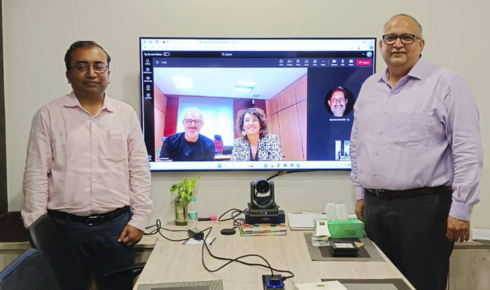If you’ve ever worked in construction or project management, you know how chaotic things can get. Tight deadlines, endless paperwork, missed updates, and unclear accountability — it’s a juggling act that often feels like it’s teetering on disaster. But what if project management didn’t have to be such a scramble? What if software could actually think alongside you — catching problems before they spiral out of control, turning raw data into clear insights, and keeping every moving part aligned? That’s the idea behind smart pm, a modern approach reshaping how builders and developers manage projects.
The Old Way: Data Everywhere, But Insight Nowhere
Let’s be honest. Most construction teams have no shortage of data. There are schedules, reports, daily logs, RFIs, and cost updates — but they’re often scattered across multiple systems, buried in email threads, or sitting in spreadsheets no one opens after the first week. Traditional project management tools have done a decent job organizing information, but they rarely interpret it. That’s the key difference today.
Where classic software stops at collecting data, next-gen platforms like SmartPM start asking questions: Are we on track? Why are delays happening? Is the schedule realistic? The goal isn’t just to log progress but to actually understand it — to give managers the kind of visibility they’ve always needed but never quite had.
Enter SmartPM: Turning Chaos into Clarity
Here’s where things get exciting. SmartPM Technologies was founded with a simple but powerful idea: construction projects generate enormous amounts of data, and that data holds the answers to better decision-making — if only we could read it properly. So, SmartPM built a platform that translates complex schedule data into digestible, actionable insights.
Think of it as a “health tracker” for your project. Instead of waiting for the end of the month to discover something’s off, SmartPM continuously monitors performance in real time. It doesn’t just show delays — it shows why they’re happening. It’s like having a project analyst working 24/7 behind the scenes, quietly flagging issues before they become problems.
Why It Matters More Than Ever
The construction industry has been notoriously slow to adopt digital transformation. But with rising costs, labour shortages, and tighter client expectations, efficiency isn’t optional anymore — it’s survival. SmartPM steps right into that gap, bridging the disconnect between what’s planned and what’s actually happening.
For general contractors, developers, or owners juggling multiple jobs, it provides a kind of “single source of truth.” No more guessing games or vague updates like “we’re 80% done.” The system quantifies progress, verifies claims, and makes accountability transparent. When delays do occur — and they always do — SmartPM gives you the context to manage them instead of react to them.
A Different Kind of Project Management
One of the most refreshing aspects of smartpm solution is how human it feels despite being so data-driven. The interface is clean, intuitive, and designed for real people — not just analysts or data scientists. It doesn’t bombard you with technical jargon or unnecessary visuals; it tells you exactly what you need to know to take action.
It’s this balance between intelligence and usability that’s winning SmartPM a loyal following across the construction world. From small contractors to billion-dollar firms, teams are realizing that smart doesn’t mean complicated. It means being able to see what matters most, right when it matters.
The Power of Predictive Insight
One of the most underrated parts of SmartPM’s technology is its ability to predict outcomes. Instead of waiting for a schedule to crash, the platform uses analytics to forecast risks ahead of time. That’s game-changing. It’s not just reporting history — it’s helping you rewrite it in real time.
Imagine getting an alert that says, “You’re on track to miss your target completion date by 18 days due to delayed framing” — not after the fact, but weeks before it happens. That’s the kind of forward-looking control that turns reactive managers into proactive leaders.
Real Stories, Real Change
Companies that have embraced SmartPM often talk about how it changes their culture, not just their process. Suddenly, conversations shift from finger-pointing to problem-solving. Meetings become shorter, updates become clearer, and teams spend less time debating numbers and more time actually fixing issues.
Owners love it because it adds transparency. Contractors love it because it gives them proof — data that backs their claims and protects their reputation. Everyone, from the site superintendent to the executive team, operates from the same set of facts.
The Bigger Picture
If you zoom out, SmartPM represents something much larger than a piece of software. It’s part of a broader shift toward intelligence in the built environment. Just like smart homes and smart cities, construction is becoming data-aware. We’re moving from intuition-driven decisions to evidence-based execution, and that’s a huge leap forward.
Of course, technology isn’t a silver bullet. Projects will still face surprises, budgets will still stretch, and people will still make mistakes. But having a system that learns from every project and applies that knowledge to the next one — that’s progress in the truest sense.
Looking Ahead
The future of construction project management isn’t about replacing people with machines. It’s about empowering people with better tools — tools that work quietly in the background, simplifying what used to be complex. And in that sense, smartpm isn’t just a product; it’s a philosophy.
We’re entering an era where time, cost, and performance data will be as valuable as concrete or steel. The companies that understand and use this information wisely will not only build faster — they’ll build smarter.
So, the next time your project feels like it’s running away from you, maybe it’s time to let technology lend a hand. Because in a world where deadlines are tighter and margins thinner, “smart” isn’t just a feature anymore — it’s the foundation.

























+ There are no comments
Add yours